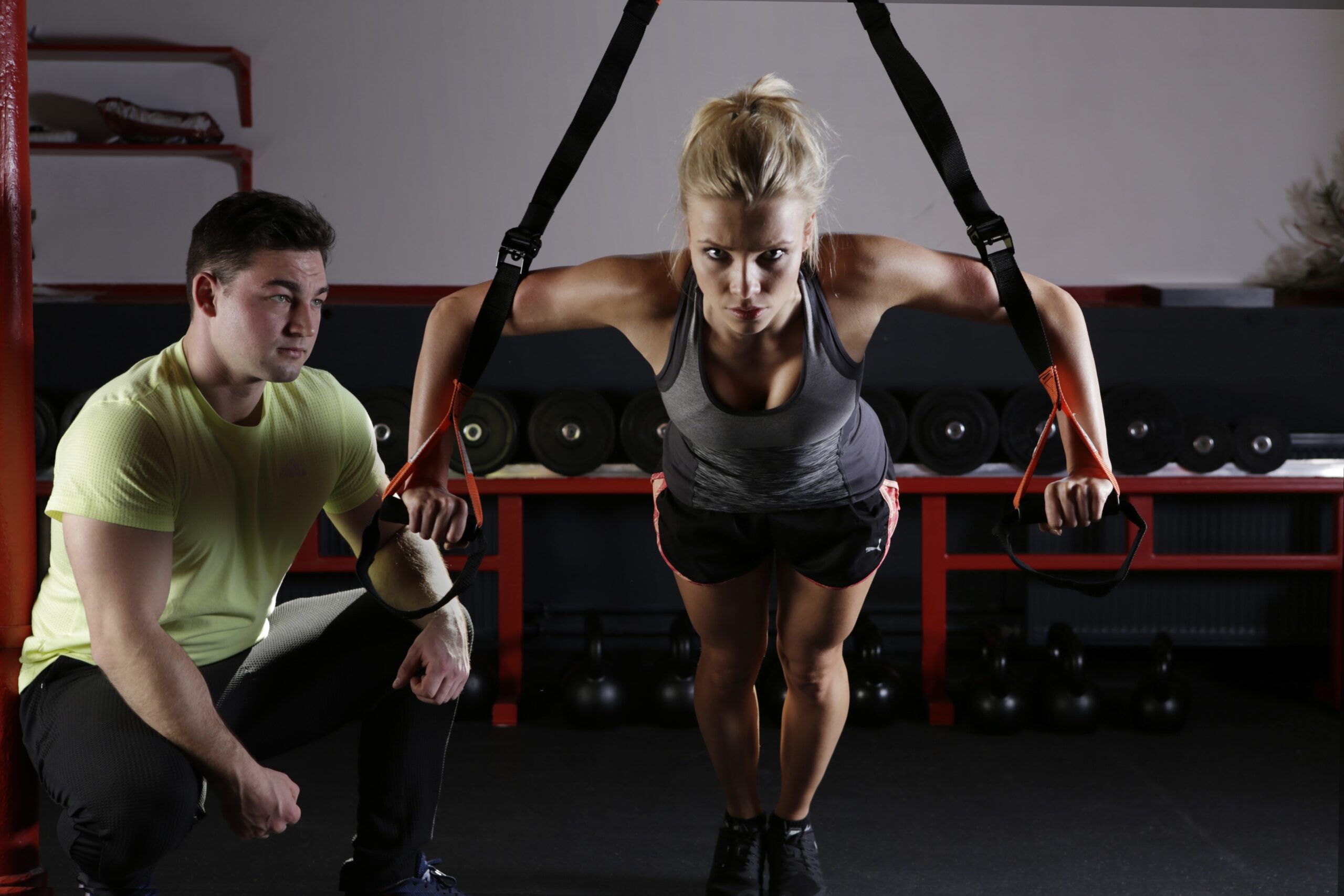What is a Physical Therapy Aide?
In essence a physical therapy aide or technician, is an entry-level healthcare role that makes you an integral part of a team focused on physical rehab. With just a high school diploma or its equivalent, you can start your journey in this exciting field, no advanced degrees or certifications are needed. It’s an excellent launchpad for those eager to get their foot in the healthcare door without the long educational runway.
But let’s not downplay the importance of a Physical Therapy Aide just because the educational requirements are less than becoming a Physical Therapist or becoming a Physical Therapist Assistant. Working closely under a licensed Physical Therapist, Aides wear many hats in a clinic or hospital’s rehab department. They handle a mix of clerical duties and patient interactions, making them a versatile asset to the healthcare team.
Working closely with a licensed Physical Therapist, a Physical Therapy Aide is not just an assistant but a vital member of the healthcare team. With duties ranging from clerical tasks to direct patient interactions, Aides are versatile players in any rehabilitation setting. This role offers an invaluable learning experience that can be a cornerstone if you’re aiming for advanced healthcare roles down the line. Moreover, the networking and mentorship you’ll receive can open doors for future career advancements.
What Exactly Does a Physical Therapy Aide Do?
A Physical Therapy Aide isn’t just an assistant; they’re an essential cog in the healthcare machinery. They work hand-in-glove with licensed Physical Therapists to make sure the treatment plan for each patient is executed smoothly. While they don’t offer medical treatment, Aides set the stage—literally. They prep therapy rooms, organize needed equipment, and assist patients as they move from one area to another within the clinic.
When they’re not assisting with therapies, Aides get down to the nitty-gritty of administrative work. Think managing patient files, scheduling upcoming sessions, and handling billing. This isn’t just busywork; it’s often mandated by law to be done accurately and efficiently. Organizational skills are your friend here, as is a good grasp of healthcare-specific software.
But wait, there’s more. Keeping therapy areas spic and span falls under their purview too, as does keeping track of inventory. Safety is a big deal, and they make sure the environment is clean for both patients and staff.
The interaction with patients is more than just transactional. Aides often escort patients from the lobby to therapy areas, providing essential human contact. They brief patients on what to expect during therapy and give instructions on equipment use.
In essence, a Physical Therapy Aide is a Swiss Army knife in healthcare settings. Their multifaceted role ensures the smooth operation of the clinic, allowing Physical Therapists to concentrate on what they do best: heal.
How Much Can You Expect to Earn as a Physical Therapy Aide?
Money talks, so let’s talk money. How much you make as a Physical Therapy Aide can depend on a slew of factors—where you’re working, your experience, and the kind of facility, to name just a few. As per the Bureau of Labor Statistics, as of 2020, the median annual income for this role was about $27,000. In some specialized settings and states, you could be looking at a higher number.
Then there’s the cherry on top: benefits. Think health insurance, retirement savings plans, and the coveted paid time off. If you’re working in a big healthcare institution, the benefits package is often more generous than what you might find in a smaller private practice.
It’s not just about the here and now, though. Being a Physical Therapy Aide can be a stepping stone to higher-paying roles in healthcare. With added experience and perhaps more schooling, the financial sky could be the limit.
Taking Your First Steps to Becoming a Physical Therapy Aide
If this all sounds appealing, you might be wondering how to get your foot in the door. The good news is the pathway to becoming an Aide is less convoluted than many other healthcare professions. We’ll explore that next.
1. Educational Requirements: The baseline educational requirement for most Physical Therapy Aide positions is a high school diploma or its equivalent. Some states and employers may have additional requirements, but specialized degrees are generally not necessary.
2. On-the-Job Training: Unlike Physical Therapists, who require years of educational training, most Physical Therapy Aides learn the ropes through on the job training. Your employing facility will usually provide this training to familiarize you with administrative software, patient care protocols, and equipment usage.
3. Certifications: While not mandatory, some Aides choose to get certified to increase their job prospects. Certification programs, available through various organizations, cover relevant topics like anatomy, medical terminology, and healthcare ethics.
4. Soft Skills: Being a successful Physical Therapy Aide also requires a set of soft skills, such as communication, empathy, and attention to detail. These skills are often not taught but developed through experience and emotional intelligence.
5. Job Search: Armed with the necessary education, training, and skills, the final step is to start your job search. Physical Therapy Aides are employed in various settings, including hospitals, rehabilitation centers, and private practices. Websites, networking, and direct applications are all viable routes to landing your first job.
How Does One Become a Physical Therapy Aide?
If you’re drawn to the healthcare world but not quite ready for a marathon of schooling, becoming a Physical Therapy Aide offers a simpler path. The journey to this role provides both flexibility and upward mobility. It’s a great way to dip your toes into healthcare without a years-long academic commitment or having to do Physical Therapy continuing education on an annual basis.
What’s the Job Market Like for Physical Therapy Aides?
Hold onto your hats because the demand for Physical Therapy Aides is taking off. With healthcare as one of the fastest-growing sectors in the U.S., the Bureau of Labor Statistics estimates that employment in this specific role will grow by an impressive 29% from 2019 to 2029. That’s way faster than most other professions.
A significant driver of this demand is the aging baby boomer generation. They’re living longer lives, but those extra years sometimes come with physical challenges that need therapy. Plus, medical tech keeps getting better, offering more non-surgical treatment options and, you guessed it, creating more jobs for Aides.
However, let’s talk about the elephant in the room: competition. Given the low entry requirements for becoming an Aide, you’re not the only one eyeing this role. Standing out might mean earning additional certifications or skills, or maybe even becoming bilingual.
Do Physical Therapy Aides Need Continuing Education?
While Physical Therapy Aides aren’t usually subject to stringent continuing education (CE) requirements like other healthcare pros, staying on top of your game is never a bad idea. Some states or employers may even have their own CE requirements. Options abound, from workshops to online courses to more formal training programs. This is another great benefit of entering this healthcare job that does not require a degree.
Not just about ticking boxes, many Aides go beyond the minimum. They invest in further training in administrative tasks or specialized patient care. And some even use their role as an Aide as a springboard to leap into higher-paying healthcare positions.
Where Can You Learn More About Physical Therapy Aide?
Knowledge is power, and thanks to the internet, it’s also plentiful. You’ll find websites, online forums, and social media platforms loaded with insights and advice about becoming and succeeding as a Physical Therapy Aide. But don’t overlook the value of old-school resources like books and mentorship from seasoned professionals.
Organizations like the American Physical Therapy Association (APTA) can also be a goldmine. They offer not just educational resources but also job listings and opportunities to network with others in the industry. Whether it’s a digital deep-dive or attending an industry conference, you’ll find plenty of ways to grow your understanding of this role.
Final Thoughts
If you’re feeling the pull toward a healthcare career, there’s good news. Stepping into the role of a Physical Therapy Aide not only offers promising prospects but also a deep sense of job satisfaction. Picture yourself contributing to the well-being of others—pretty fulfilling, right? Whether you see this as your entry ticket to the healthcare world or as a long-term profession, the doors are wide open. Beyond a respectable income, the role enables you to truly make a meaningful impact on people’s lives. For those who are naturally empathetic, enjoy aiding others, and are keen on a career with room to grow, becoming a Physical Therapy Aide could very well be your calling.
Physical Therapy Aide FAQs
1. Is a certification required to become a Physical Therapy Aide?
No, certification is generally not required, but some employers may prefer certified candidates.
2. What’s the difference between a Physical Therapy Aide and a Physical Therapy Assistant?
A Physical Therapy Assistant has a more advanced role, usually requiring an associate’s degree and state licensure, whereas an Aide often only needs a high school diploma and on the job training.
3. Are there opportunities for career advancement?
Absolutely. Many Aides go on to become Physical Therapists, Occupational Therapists, or pursue other advanced healthcare roles.
4. Do Physical Therapy Aides work only in hospitals?
No, they work in a variety of settings, including private practices, outpatient clinics, and rehabilitation centers.
5. Is the job physically demanding?
Yes, the job can be physically demanding as it often involves lifting, bending, and standing for extended periods.

